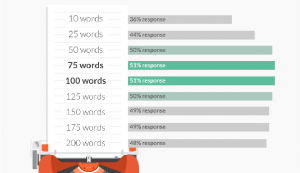For nearly two years, companies have had to meet the flexible needs of their employees. Remote work is here to stay for many industries, but even more so, the future is a flexible workforce. In order to retain top talent, employers must be ahead of the curve to meet new employee expectations heading into the new year.
With labor shortages expected to continue through 2022, managers must place employee and talent retention as a first priority. Contact centers have a bleak history of high turnover rates and maintain a reputation for being soul-killing environments to work in. So, it’s no surprise that agent retention has always been a challenge for customer service management.
In the future, contact center leaders must adapt to support a flexible workforce and find creative ways to scale quickly. With the popularity of the gig economy, there’s a solution that works for everyone.
First, What is the Gig Economy?
The gig economy refers to freelancers or independent workers who are contracted on a short-term basis by organizations to do on-demand jobs. This way of work has skyrocketed in popularity over the last few years. For those who lost work in the COVID-19 pandemic, the gig economy empowered them to continue working a flexible job — like driving an Uber, delivering for Doordash, or fulfilling freelance projects at-will.
The gig economy has many benefits. Let me break it down for you:
Benefits of the gig economy for the workforce:
- Allows employees to work on projects for multiple companies simultaneously, allowing them to grow skill sets and exposing them to more opportunities
- Provides more independence and freedom to choose when and where to work
- Offers less risk of job and income loss with multiple employers
Benefits of the gig economy for employers:
- Gives organizations the ability to hire experts for services not needed on a regular basis
- Allows for agile scaling of the workforce based on demand
- Reduces cost of providing healthcare and other benefits
- Lowers office space costs
With all of these possible benefits to a flexible workforce, how do you bring the perks of a gig economy to your contact center?
Step One: Implement a flexible workforce to staff for peak volume.
Strategize how you use a flexible workforce to provide the best consistent service for your customers. Contact centers make best use of the gig economy by using gig workers to fill in staffing gaps. Every contact center has peak times when incoming calls, emails, and chat messages increase significantly. During these peak seasons, call center agents often struggle to deal with these high volumes. This adds stress for your employees and results in longer wait and hold times for customers.
But, with part-time gig workers, your contact center can proactively plan ahead for peak and idle times. You can match agent team sizes to higher volumes of customer interactions. As a result, there will be no interruption in your customer care, keeping both your customers and agents happy.
Step Two: Establish onboarding and hiring standards to employ top talent.
You don’t want the quality of your customer service to suffer because you embrace a flexible workforce. Whether you’re hiring a full-time contact center agent or a “gig” employee, maintain your expectations for hiring the best of the best. Hire agents with the best skills to meet customer expectations. Look for agents who are especially coachable, adaptable, and self-driven to work in any flexible setting.
Follow the same high standards for onboarding your flexible workforce as you would for full-time workers. Make sure each employee has personal development goals. Prioritize initial training and create a culture that encourages feedback and asking questions. Even with a flexible workforce, your employees need to know they will be invested in and have opportunities for growth.
Step Three: Bulk up your internal resources so agents have access to SOPs and common customer questions.
How do you support a flexible team and avoid working 15 hours a day? When you allow agents to work flexible hours and work from various locations, you need to strengthen internal resources. Your night shift agents shouldn’t need to send you a message on Slack at 8pm asking a basic question if you give them clear resources.
Create a robust internal knowledge base with standard operating procedures, instructions for basic troubleshooting, and lists of common customer questions with answers. No matter where and when your team is at work, they can use self-service tools to remain empowered while working independently from home.
Step Four: Consolidate your customer information into a single database and make customer history easy to access.
In a traditional in-person office, it’s typical for agents to casually share information about customers throughout the day. Each person on your team is a resource, able to give context regarding past interactions with customers or share customer stories. But, when your employees are working from home with varying hours each day, it’s not as simple as walking by a teammates’ desk to learn about a customer’s history.
Support a flexible workforce in your contact center by creating a database that holds customer information in one place. Ensure each customer has a profile. Then, have agents update the profile every time the customer interacts with the company. This gives your employees a single place to look to learn about a customer so they can deliver a personalized customer experience.
Step Five: Outline your quarterly goals and email them to every agent, so they can pin it to their desktop as a reminder of what’s expected.
When your employees are working flexible hours, it’s not as easy to hold all-team meetings. It’s a lot harder to stay on the same page or talk through your daily goals and achievements. So, you have to work preemptively to communicate goals and standards with your agents.
Always maintain clear metrics and goals for your agents to keep peak performance. Outline these goals quarterly so every employee understands your expectations, no matter what timezone they’re working in or what hours they’re working.
Then, keep these metrics front and center on each employees’ dashboard. Use performance tiles and attractive reports so your remote agents know where they’re measuring up so they can continue to improve.
Business & Finance Articles on Business 2 Community(34)
Report Post






